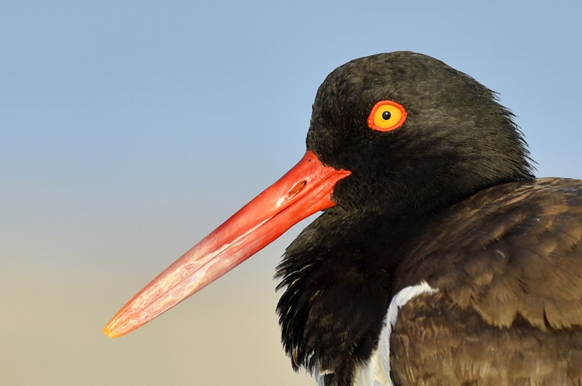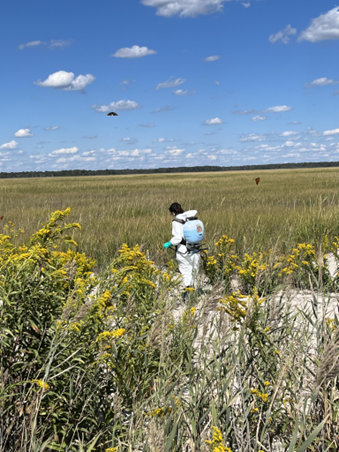Announcing New NFWF Funded Project to Study and Monitor American Oystercatchers along the Delaware Bay
by Emmy Casper, Wildlife Biologist
CWF is excited to announce a new project funded by the National Fish and Wildlife Foundation’s Delaware Watershed Conservation Fund designed to develop and execute management strategies for American oystercatchers along the Delaware Bay. Breeding populations of American oystercatchers (State Species of Special Concern) have been well studied and monitored along New Jersey’s Atlantic Coast since 2003, but very little is known about the oystercatchers that nest on the sandy beaches along the Delaware Bay. In 2021, CWF conducted a near bay-wide window census survey to establish a baseline estimate of the Bayshore population. Thirteen oystercatcher pairs were documented across approximately 35 sites from Cape May Point to Sea Breeze, prompting a need for further research and management. This new project seeks to shed light on this understudied population and add to our scientific understanding of their management needs.

CWF will be working closely with our project partners, The Wetlands Institute and the U.S. Fish and Wildlife Service Coastal Program, to conduct comprehensive monitoring and management of breeding Bayshore oystercatchers through 2024. In addition to locating nests and tracking their success, we will be conducting research to better understand how oystercatchers utilize Bayshore habitats and what factors threaten their breeding productivity. For example, habitat assessments and elevation measurements at each nest site will inform which habitats are most suitable for nesting oystercatchers, and trail cameras deployed on each nest will help determine the relative influences of predation, disturbance, and weather events on nest success. In addition, banding adult oystercatchers and their chicks will allow us to track their mate/site fidelity, dispersal, and distribution along the Bay. Collectively, the data we gather will be used to inform future management decisions in order to better optimize their impacts.

Another significant aspect of the project involves developing strategies to create and maintain oystercatcher nesting habitat. Phragmites australis, an invasive reed plant, threatens to limit nesting habitat by encroaching on high elevation areas where oystercatchers would typically nest. We will be implementing targeted Phragmites removal at specific study sites and tracking its effectiveness as a relatively low tech/low cost method to restore and increase nesting habitat. The results will have significant restoration implications, not just for oystercatchers, but also for other at-risk species along the Bayshore including horseshoe crabs and diamondback terrapins.
As the 2023 nesting section quickly approaches, we have already begun preparations for this year’s on-the-ground monitoring efforts. We are confident that this science-driven approach will help fill the knowledge gaps surrounding Bayshore oystercatchers, and we look forward to collaborating with partners and volunteers to work towards long-term conservation benefits for the population. Stay tuned for project updates!
Discover more from Conserve Wildlife Foundation of NJ
Subscribe to get the latest posts sent to your email.